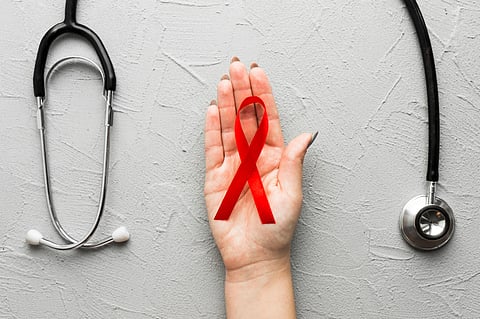Living Drugs: A Ray of Hope in Cancer Treatment
“When we first started this program, it was a leap of faith for everyone involved,” recalls Dr. T Raja, Director - Medical Oncology at Apollo Cancer Centres, Chennai. “One of our patients, whom we treated, is now approaching two years cancer-free. It’s so gratifying to see these results for our patients and their families.”
CAR T-cell therapy is a groundbreaking treatment in the field of cancer therapy. Known scientifically as chimeric antigen receptor T-cell therapy, or CAR T, this innovative approach is being hailed as a “living drug” because it uses a patient’s own immune cells, re-engineers them, and arms them against cancer. The therapy has shown remarkable results, especially in cases where all other treatments have failed.
A Revolutionary Approach to Cancer Treatment
CAR T-cell therapy represents a significant departure from traditional cancer treatments like chemotherapy and radiation. Unlike these conventional methods, which broadly attack both cancerous and healthy dividing cells, CAR T-cell therapy is specifically designed to target cancer cells with precision. These cells are engineered to recognize specific proteins on tumor cells, latch onto them, and kill them, reducing damage to healthy cells.
CAR T therapy is currently approved for certain types of cancers, including acute lymphoblastic leukemia, various B-cell lymphomas, and myeloma. The therapy has been especially promising for patients who have exhausted other treatment options. For many of these patients, this therapy offers a second chance—a new option when all hope seems lost.
The Science Behind CAR T-Cell Therapy
At its core, CAR T-cell therapy harnesses the body’s immune system to fight cancer. The patient’s own T-cells, a type of immune cell, are taken and modified in the lab to better recognize and attack cancer cells. These modified cells are then infused back into the patient’s body, where they go to work, targeting and destroying cancer cells.
This personalized treatment is tailored specifically to each patient’s unique cancer profile, making it a highly targeted approach. This is called autologous therapy, meaning the cells come from the patient and are reintroduced after modification.
The future of CAR T-cell therapy seems exciting, with researchers working on developing an “off-the-shelf” version of these cells. If successful, this would mean that the therapy could be administered more quickly, without the need for a two-to-three-week waiting period for cell engineering. This innovation could make CAR T-cell therapy more accessible to a broader range of patients, providing immediate treatment options for those in critical condition.
Managing the Challenges
While CAR T-cell therapy offers many benefits, it’s not without its risks. Patients may experience side effects such as cytokine release syndrome (CRS) and neurological toxicities. While any new treatment comes with its own set of challenges, with careful monitoring and specific medications to manage these side effects, the risks can be significantly brought down.
The therapy’s potential side effects are a reminder of the delicate balance between treating cancer and preserving quality of life. However, for many patients, the promise of CAR T-cell therapy outweighs these risks, especially given the lack of alternatives for those with relapsed or refractory cancers.
A Beacon of Hope for Pediatric Patients
Interestingly, CAR T-cell therapy is also making waves in pediatric oncology, particularly in treating acute lymphoblastic leukemia (ALL), a common childhood cancer. “For children who have relapsed after standard treatments, CAR T-cell therapy has shown to be remarkably effective,” says Dr. Raja. “It’s incredibly encouraging to see children who have undergone this therapy doing well and thriving.”
A Personal Story of Triumph
Dr. Raja shares the story of one such patient, a young child diagnosed with a relapsed form of ALL. After failing to respond to conventional treatments, the child was treated with CAR T-cell therapy at Apollo Cancer Centre in Chennai. Today, the child is healthy and enjoying a normal life, a testament to the transformative power of this innovative therapy. “It’s moments like these that make all the hard work and research worthwhile,” he reflects.
Looking Ahead
As the field of CAR T-cell therapy continues to evolve, it is expected to reach new horizons. Currently, it’s used for a few cancers, but research is underway to expand its use to other types, including some solid tumors. This forward-thinking approach could bring new hope to countless more patients who currently have limited options.
“We call CAR T-cells ‘living drugs’ because they stay in the body, retain their memory, and continue to fight cancer long after the initial treatment,” Dr. Raja explains. “There’s a lot to look forward to, and we’re just at the beginning of understanding what this therapy can achieve.”
In the ever-evolving battle against cancer, CAR T-cell therapy stands out as a beacon of hope—a new, living weapon in the fight to give patients a chance at life and health.

